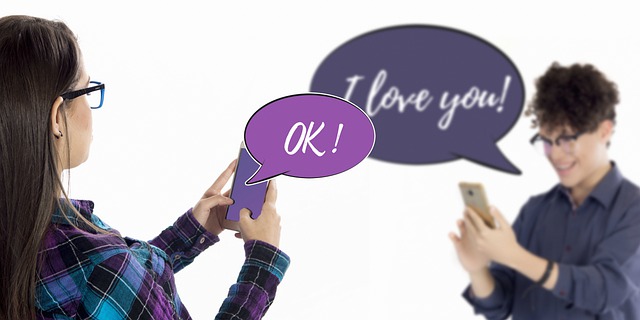Situational irony is a type of irony that arises from situational circumstances. It’s often described as “the juxtaposition of what is expected to happen and what actually happens.” This can be a potent tool for thriller writers, as it can create tension and surprise.
This blog post will discuss the situational irony definition and look at some excellent examples!
What is situational irony, and how is it different from other types?
Situational irony occurs when an event’s outcome differs from what was expected. This creates a contrast between expectations and reality which may be entertaining, thought-provoking, or both.
It differs from other types of irony in that it typically does not involve intentional deception or sarcasm on the speaker’s part.
There are three types of irony – verbal, situational, and dramatic
– Verbal irony is when the speaker says one thing but means another.
– Situational irony is a discrepancy between what is expected to happen and what happens.
– Dramatic irony is when the audience knows something that the characters in the story do not know.
Here are some examples of situational irony from literature, movies, and everyday life
Literature: In William Shakespeare’s Romeo and Juliet, the star-crossed lovers take their lives in a tragic act of irony. They expected to be able to live happily ever after together, but instead, they died due to their decisions.
In Pride and Prejudice, Mr. Darcy initially despises Elizabeth Bennet but eventually falls in love with her (despite his better judgment). This is ironic because the reader expected him to realize their incompatibility – not find true love.
Movies: In The Princess Bride, Westley is reunited with the woman he loves only to find out she has already been promised to another. This unexpected situation leaves him heartbroken and the audience in shock.
Situational Irony in Everyday Life: Situational irony can also be found in everyday life. For example, a hardworking student might fail an exam despite their best efforts to pass. Another example is when a person does everything they can to stay healthy but still gets sick. These examples show how situational irony can strike even the most diligent people.
Musicians sometimes use situational irony to illustrate their points in songs
Pearl Jam’s “Black” is a classic example of this technique. Eddie Vedder sings in the song about how people are “so happy to be alive” despite their struggles and pain. The irony lies in the fact that he sounds so sad despite his words of hope.
How can situational irony create humorous or poignant effects in writing and storytelling?

One example of how situational irony can create humorous or poignant effects is when a character tries their hardest to accomplish something yet fails miserably. This creates a funny yet sad effect that readers can identify with.
Additionally, situational irony can emphasize the contrast between expectations and reality. When a character expects something to be one way, but it turns out to be much different than expected, this can create an ironic twist that adds layers of meaning and emotion to the story.
Ultimately, situational irony can make stories more exciting and thought-provoking and help create a deeper understanding of the themes and messages presented in a story.
Lastly, situational irony can also be used to highlight certain aspects of characters or plot points. For example, if a character is portrayed as very intelligent but then makes an obvious mistake, this ironic contrast can add texture and humor to the character’s development.
Is there a downside to using situational irony too often or in the wrong way?
There can be a downside to using situational irony too often or in the wrong way. Overusing situational irony can make it less effective, as readers may become accustomed to it and no longer be surprised by its use. Additionally, misused or out of context can lead to confusion rather than humor or insight.
Finally, it can be seen as inauthentic or overly trite, which can detract from the overall message of a story. Therefore, it is essential to use situational irony sparingly and thoughtfully when writing.
Analyze how situational irony is used in literature, films, and everyday life

Look for examples in classic literature and films
– to understand how irony can add depth, humor, or contrast to a story
Examine media works such as television shows, music videos, or video games
– to see how irony is applied in our modern culture
Finally, reflect on how irony may play a role in your own life, either in terms of personal experiences or relationships with others.
Understanding the power and purpose of irony can help you to make more meaningful connections with the stories and people around you.
When situational irony leads to something bad happening instead of something good

Situational irony can sometimes lead to something bad happening. For example, a person might seek medical assistance after experiencing chest pains only to suffer a heart attack while in the hospital and die as a result.
Another example could be when someone trying to do something kind for another person ends up harming or hurting them instead. In both cases, the result is quite different from what was intended.
Situational irony can also be found when a person’s actions or words are misinterpreted and lead to unintended consequences. For example, if an individual tries to comfort someone by saying, “It could have been worse,” only to worsen the situation. In this case, the speaker’s words were taken out of context and had a negative outcome.
To understand how situational irony works in a thriller, here are a few classic examples
– Let’s start with an example from the classic film Jaws: After Shark expert, Hooper dives underwater to inspect his fear-inspiring adversary, he learns that its great jaw was broken—the shark had lost its defensive capacity due to prolonged exposure inside a cage—and immediately begins swimming back up towards safety only for the shark trap doors to suddenly slam shut on top of him!
At this moment, we experience situational irony because, by all rights, Hooper should now be safe down there with his friendly discovery. Instead, Hooper faces grave danger due to circumstances beyond his control. Thanks to this sudden turn of events, we are presented with an intense, suspenseful sequence where Hooper has no choice but to fight off or outwit an enemy he could have easily defeated earlier on, which leads us on one more wild ride until our hero escapes and surfaces victorious yet again!
– Another example: In the classic thriller The Silence of the Lambs, one of its most iconic scenes is when FBI special agent Clarice Starling enters serial killer Hannibal Lecter’s cell under pretenses. Lecter has been imprisoned for heinous crimes, and Starling assumes she will be safe when meeting him face-to-face.
Yet Lecter is much more intelligent than anyone could have guessed and quickly exposes her ruse, turning this simple meeting into an intense psychological battle between them instead. This unexpected turn creates tension as they continue their conversation while laying out their respective intentions toward each other.
As we watch this scene unfold onscreen, we can’t help but feel uneasy as our sympathies are torn between these two complicated protagonists—making it clear why this scene was so impactful and memorable!
– Finally, in The Truman Show, Jim Carrey plays a man whose entire life is a television show without his knowledge. He believes he’s living an everyday life, only to find out that every moment of it has been carefully crafted for the entertainment of others, adding an unexpected and ironic twist.
At its core, situational irony contrasts by flipping our expectations upside down while creating an atmosphere full of anticipation and drama—perfect for any thrilling story!
Conclusion
Situational irony occurs when there is a conflict between what is expected to happen and what happens. This type of irony can create humorous or poignant effects in writing and storytelling. While situational irony can be an effective literary device, it is important to use it sparingly so it does not lose its impact. Situational irony can add depth and humor to a story when used correctly.
If you’re working on your first novel and are looking for more help with your writing, check out my other articles on writing at https://ullahakanson.com/blog/
All the best,
Ulla

